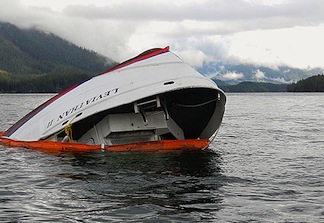(OTTAWA) — The government of Canada has reached another milestone in its commitment to keep improving the safety of Canada’s transportation sector by modernizing legislation and regulations.
Minister of Transport Marc Garneau on Friday announced that the government of Canada has published Marine Navigation Safety Regulations 2020, which now apply to commercial vessels of all sizes, including fishing vessels, workboats, water taxis and ferries.
The new regulations, which reflect extensive consultation with Canadians and the marine industry, represent a consolidation of nine existing sets of marine safety regulations into a single one that:
• Provides clearer and more up-to-date language on required navigational safety equipment;
• Requires vessel owners to have equipment to help reduce the risk of collisions that could cause pollution, like oil spills, and threaten endangered marine life, such as whales;
• Requires lifesaving equipment that will send emergency signals and provide the vessel’s location;
• Applies to over 23,000 commercial vessels of all sizes; and
• Better aligns with international marine safety standards such as the International Convention for the Safety of Life at Sea (SOLAS).
Marine Navigation Safety Regulations 2020 also includes enhanced requirements to address important safety issues highlighted by serious marine occurrences, such as the fatal capsizing of Leviathan II in 2015, after which the chief coroner, the Transportation Safety Board of Canada, and the auditor general all made key safety recommendations. These include requirements for commercial vessels to have equipment on board to help improve search and rescue efforts as well as for collision avoidance.
While some of the requirements take effect immediately, others will take effect over the coming years: automatic identification systems (AIS) requirements will take effect in April 2021; electronic chart display information systems (ECDIS) in October 2021; and bridge navigational watch alarm systems (BWNAS) in January 2022.
“We know how much Canadians are committed to protecting the safety of our waters and life at sea. We’re proud to work with Canadians and our marine safety partners in launching these new Navigation Safety Regulations 2020, and to keep delivering on our commitment to improving the safety of marine environments and the transportation sector in Canada,” Garneau said.
Quick facts
Between 2008 and 2018, there were an average of 50 serious injuries and 16 fatalities per year from incidents on commercial vessels in Canadian waters. In many cases, the vessels had no way to signal for help. With the new equipment requirements under Navigation Safety Regulations 2020, search and rescue units will now be better able to receive emergency signals and find vessels in distress.
The new regulations will require lifesaving equipment such as AIS, emergency position-indicating radio beacons (EPIRBs), and ECDIS that will send emergency signals and provide the vessel’s location to help improve search and rescue efforts.
Click here to access the new regulations.
– Transport Canada

